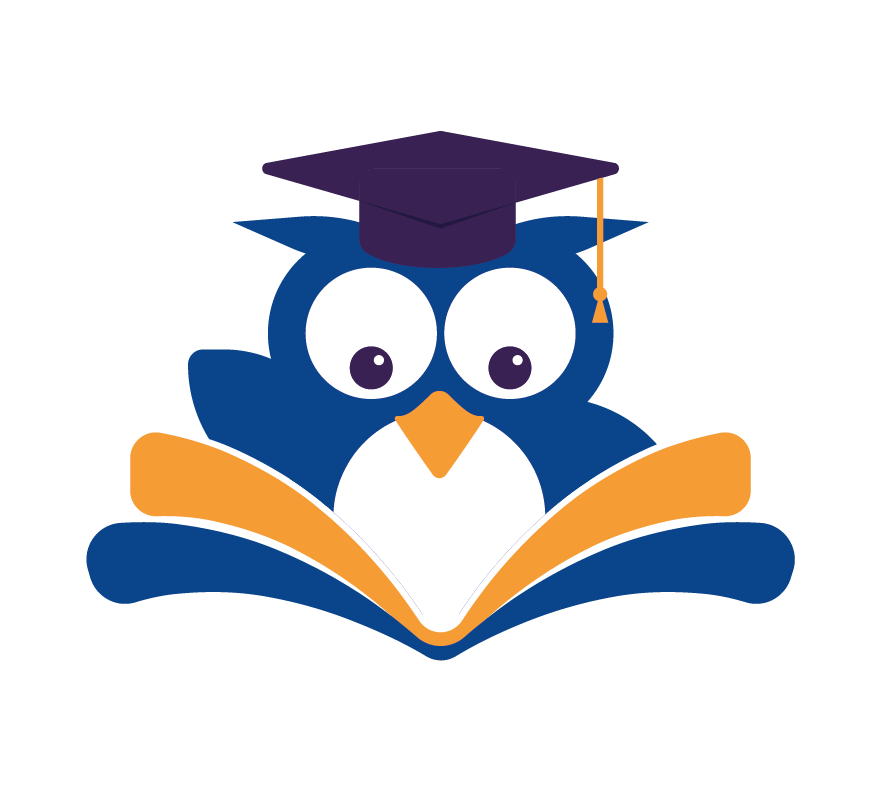From childhood to adulthood, the learning process shapes us. It’s more than just memorizing facts. It’s a complex journey influenced by many educational theories.
Exploring how we learn reveals the learning process’s intricacies. Knowing these theories is key for good education.
Key Takeaways
- Learning is a complex process influenced by various theories.
- Understanding these theories is crucial for effective education.
- The learning process shapes who we are and what we know.
- Effective learning isn’t just about memorizing facts.
- Educational theories play a significant role in the learning journey.
The Science Behind Learning
Let’s explore the world of educational psychology and discover how our brains learn! Knowing how our brains work is key to making learning better.
Neurological Foundations of Learning
Learning is all about brain chemistry and how connections are made. When we learn something new, our brain changes a lot.
Brain Chemistry During Learning
Neurotransmitters like dopamine and serotonin are important for learning. They help move information and make new brain connections.
Synaptic Connections and Knowledge
Learning makes new connections and strengthens old ones. This is how we keep and get new knowledge.
The Role of Neuroplasticity
Neuroplasticity lets our brain change and adapt. It helps our brain get better at learning new things.
- Neuroplasticity helps us learn new skills and knowledge all our lives.
- It’s also important for getting better after brain injuries.
Brain Regions Involved in Learning
Many brain areas help with different parts of learning. Knowing this helps us make learning better for everyone.
The hippocampus is key for making new memories. The prefrontal cortex helps with making decisions and solving problems.
“The brain is a complex, dynamic system that is capable of change and adaptation throughout life.”
By understanding learning science, we can make learning better for everyone. We can tailor education to meet different needs.
How We Learn: The Cognitive Process
To understand how we learn, we must explore the cognitive steps involved. Learning is a complex journey from first seeing information to keeping it in our minds long-term. Knowing these steps helps us study better and remember more.
Stages of Knowledge Acquisition
The learning journey starts with attention and perception. When we see new info, our brains choose what’s important. This first step is key because it decides what we focus on.
Attention and Perception
Attention is like a gatekeeper, deciding what to focus on. Perception then makes sense of this info, using what we already know. For example, learning a new language starts with listening to sounds and structures.
Encoding Information
After info passes through attention and perception, it must be encoded. Encoding turns info into a form our memory can hold. Techniques like repetition, association, and visualization help. Mnemonics, for instance, make complex info easier to remember.
Information Processing Model
The information processing model compares our brains to computers. It shows how we input, process, store, and retrieve info. This model highlights that learning is more than just taking in info; it’s about how we process and keep it.
The Learning Curve Explained
The learning curve shows how we learn over time. It starts steeply as we quickly learn new things, then levels off as we get more familiar. Knowing this curve helps us study smarter and adjust our methods for better retention.
By understanding these cognitive steps, we can make our study methods more effective. This improves both our learning experience and memory.
Different Learning Styles and Their Impact
Learning styles are as unique as we are. This understanding can change education. Tailoring learning to fit each person’s way can improve how much we learn and understand.
Visual, Auditory, and Kinesthetic Learners
The VAK model divides learners into three groups: Visual, Auditory, and Kinesthetic. Visual learners do well with pictures, diagrams, and videos. Auditory learners learn best from spoken words, like in lectures or audio. Kinesthetic learners need to do things with their hands to learn.
Multiple Intelligence Theory
Gardner’s Multiple Intelligence Theory says we have different learning styles. It also says we have multiple strengths, not just one.
Gardner’s Eight Intelligences
Gardner found eight types of intelligence: Linguistic, Logical-Mathematical, Spatial, Bodily-Kinesthetic, Musical, Interpersonal, Intrapersonal, and Naturalistic. Knowing these can help find your learning strengths.
Identifying Your Learning Strengths
To find your learning strengths, think about how you learn naturally. Do you like watching tutorials or listening to podcasts? Maybe you learn best by trying things out. Knowing your strengths can help you learn better.
Adapting Teaching to Learning Styles
Teachers can make learning better by teaching in ways that fit different learning styles. Using pictures, hands-on activities, and spoken words can reach more learners. In online learning, this means using videos, games, and interactive tools.
By understanding and using different learning styles, we can make learning better for everyone. This helps all learners, including those in adult learning theories.
Memory Formation and Retention
Learning is more than just getting new info. It’s also about keeping it. We often focus on learning, but memory formation and retention are key for keeping knowledge.
Short-term vs. Long-term Memory
Our brain handles info in two main ways: short-term memory and long-term memory. Short-term memory keeps info for a few seconds. Long-term memory keeps it for a long time. Moving info from short-term to long-term is crucial for keeping it.
The Forgetting Curve
The forgetting curve shows how we remember info over time. Hermann Ebbinghaus found that forgetting increases if we don’t try to remember.
Ebbinghaus’s Research
Ebbinghaus studied memory a lot. He found that forgetting is fastest right after learning. His work shows why repeated exposure is key for remembering.
Combating Natural Memory Decay
To fight memory loss, we can use spaced repetition and active recall. These methods help solidify learning and keep it in our memory longer.
Techniques for Enhanced Memory Retention
There are many ways to improve memory, including:
- Repetition: Repeating info helps keep it in our memory.
- Chunking: Breaking info into smaller parts makes it easier to remember.
- Mnemonics: Using tricks or acronyms helps remember complex info.
By using these methods, we can greatly improve our memory. Remember, “Repetition is the mother of learning.”
These strategies can help anyone, no matter their skill level, to learn and grow.
Cognitive Development Across the Lifespan
Our brains change a lot from childhood to adulthood. These changes are due to brain development and life experiences. As we grow, our brains get better at processing information and remembering things.
Childhood Learning Patterns
In childhood, our brains are very flexible. Learning happens through curiosity and exploring. Jean Piaget’s theory of cognitive development says kids go through four stages.
Piaget’s Developmental Stages
| Stage | Age Range | Characteristics |
|---|---|---|
| Sensorimotor | 0-2 years | Learning through sensory experiences and motor activities |
| Preoperational | 2-7 years | Development of symbolic thinking, egocentrism |
| Concrete Operational | 7-11 years | Logical thinking about concrete events |
| Formal Operational | 12 years and up | Abstract reasoning, logical thinking |
Adolescent Brain Development
Adolescence sees big changes in the brain, especially in emotional control and impulse. Educational psychology helps us understand how to teach teens better.
“The adolescent brain is a work in progress, with significant development occurring in the prefrontal cortex, an area crucial for decision-making and impulse control.”
Adult Learning Capabilities
As adults, our brains keep growing. This includes neurogenesis, the creation of new neurons. Doing mentally challenging activities helps keep our brains sharp.
Neurogenesis in Adult Brains
Studies show adult brains can change and adapt. This idea, called neuroplasticity, proves our brains aren’t set in stone.
Effective Study Techniques Based on Neuroscience
Let’s explore the world of study techniques backed by neuroscience. Our brains can do amazing things, but we often miss out because we use the wrong methods. These methods don’t match how our brains work.
One top study technique is Spaced Repetition Systems. It involves reviewing material at longer intervals to lock it into your long-term memory.
Spaced Repetition Systems
Spaced repetition uses the psychological spacing effect. This effect shows that learning in spaced sessions is better than in one session.
Digital Tools for Spaced Learning
Many digital tools help with spaced repetition. Apps like Anki use algorithms to space out your reviews.
Active Recall Methods
Active Recall is another key technique. It involves recalling information from memory instead of just re-reading it. You can quiz yourself or summarize in your own words.
Active recall strengthens brain connections, making it easier to remember later. It’s better than passive re-reading, which doesn’t really help retain information.
The Pomodoro Technique and Focus Management
The Pomodoro Technique is a time management tool. It helps you stay focused by working in 25-minute blocks, then taking a 5-minute break.
Structuring Study Sessions
To use the Pomodoro Technique well, structure your study sessions. Set clear goals for each session and avoid distractions during focused work.
| Study Technique | Description | Benefits |
|---|---|---|
| Spaced Repetition | Review material at increasingly longer intervals | Improved long-term retention |
| Active Recall | Actively recall information from memory | Strengthens neural connections, improves retention |
| Pomodoro Technique | Work in focused 25-minute increments, with regular breaks | Improved focus, reduced burnout |

Using these neuroscience-backed study techniques can make your study sessions better. They help whether you’re studying for an exam, learning a new skill, or improving your memory.
The Impact of Emotions on Learning
Learning is more than just knowing facts. It’s also tied to how we feel. Our emotions can make learning easier or harder.
Stress and Learning Outcomes
Stress can hurt how well we learn. When stressed, our body makes cortisol, a hormone that messes with memory and thinking. Cortisol’s impact on memory is especially important, as too much can make it hard to remember new things.
Cortisol’s Effect on Memory
Too much cortisol can harm the hippocampus, a key part of our brain for remembering things. That’s why it’s important to manage stress to learn well.
Motivation’s Role in Knowledge Acquisition
Motivation helps us learn better. When we’re motivated, we dive deeper into what we’re learning. This makes us remember and understand more. The humanism learning theory focuses on growing as a whole person, including our emotions and personal growth. It shows that motivation is essential for learning.
Creating Optimal Emotional States for Learning
It’s important to create a good emotional state for learning. This means managing stress and staying motivated. One good way is to get into a flow state, where we’re fully focused on learning.
Flow State and Deep Learning
The flow state is perfect for learning. It’s when we’re fully focused and enjoying the learning process. This balance makes learning both fun and productive.
Modern Approaches to Educational Psychology
We’re seeing big changes in how we learn, thanks to new ideas in educational psychology. This field helps create learning strategies that meet different needs.
One big change is the use of online learning platforms. These platforms have changed learning by offering lots of resources and connecting people worldwide.
Online Learning Platforms and Their Effectiveness
Online learning platforms are getting more popular. They offer flexibility and learning tailored to each person. They use tools like quizzes and forums to keep learners engaged.
Gamification in Education
Gamification is becoming more common in schools. It makes learning fun by adding game elements. Reward systems are key, giving learners rewards for reaching goals.
Reward Systems and Learning
Reward systems motivate learners by giving them something for reaching milestones. This idea is based on the power of positive feedback to improve learning.
Adult Learning Theories in Practice
Adult learning theories, like andragogy, focus on what adults need. Unlike pedagogy, andragogy values self-directed learning and using past experiences to learn.
Andragogy vs. Pedagogy
It’s important to know the difference between andragogy and pedagogy for adult learning. Andragogy sees adults as bringing valuable experience to learning, which helps improve the learning process.

Overcoming Learning Challenges
Learning is a personal journey filled with challenges. Many face dyslexia, ADHD, or other learning differences. These conditions are not limits but chances to find new ways to learn.
Dyslexia, ADHD, and Other Learning Differences
Dyslexia and ADHD are common learning differences. Dyslexia makes reading hard, while ADHD affects focus and impulse. Knowing about these helps find better ways to learn.
Neurodiversity and Learning Strengths
Neurodiversity celebrates the variety in human brains and minds. It includes differences like dyslexia and ADHD. It’s about seeing the special talents of those with different learning styles.
For example, people with dyslexia often have great visual skills and creativity.
Personalized Learning Approaches
Learning styles vary greatly. Personalized learning fits each person’s needs and style. It might change how fast you learn, use different teaching methods, or technology to help.
David Kolb’s experiential learning is a good example. It says learning comes from doing and then thinking about it. This helps those with different learning needs.
Assistive Technologies for Learning
Assistive technologies are key for learners with different needs. They include tools like text-to-speech software for dyslexia and apps for ADHD. Technology can really help with learning.
Digital Tools for Different Learning Needs
There are many digital tools for various learning needs. For example, speech-to-text software helps with writing for those with dyslexia. Apps with visual schedules and reminders help with ADHD.
By using personalized learning and assistive technologies, we can make learning better for everyone.
Conclusion: Applying Learning Insights in Everyday Life
Learning how we learn can really improve teaching and learning. By understanding the science of learning, we can better our study methods. Adult learning theories also help us keep learning and growing as we age.
Different learning styles, how we remember things, and our emotions all matter in learning. Knowing this, we can adjust our learning to fit what works best for us. Whether you’re in school or always learning, using these tips can keep you motivated and on track.
Using good study methods and online learning tools can help you manage your learning. As you keep learning, remember the most important thing is to know how you learn best.

